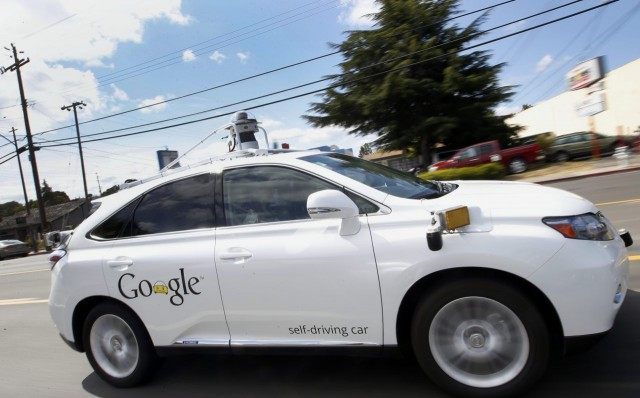The big push for self-driving cars is well and truly under way, as engineers assure us the technology is rapidly becoming practical. Bloomberg Technology reports that a new coalition to advocate self-driving cars includes Google, Ford Motor Company, Uber, Lyft, and Volvo.
The group isn’t just touting the wonders of autonomous driving technology — it “aims to work with lawmakers, regulators and the public” to “realize the safety and societal benefits of self-driving vehicles.”
High among those benefits, according to the Self-Driving Coalition for Safer Streets, would be a reduction of the 1.3 million people killed in traffic accidents. “Self-driving cars can help save millions of lives,” according to Uber.
The Verge is more direct about calling the Coalition a “lobbying group with the express purpose of advocating autonomous driving.”
“It’s a power move by some of the most high-profile names behind the still nascent technology, made at a time when regulators and policymakers in Washington, DC are still wrapping their heads around the concept of self-driving cars,” adds The Verge.
The group clearly knows how things work in Washington, because it has tapped former National Highway Traffic Safety Administration administrator David Strickland to serve as counsel and spokesperson, effectively tasking him with lobbying his own former agency. NHTSA is currently holding a series of public hearings about self-driving cars, with an eye toward releasing a set of guidelines in July.
The mega-corporate muscle and political savvy behind this group don’t necessarily make its mission sinister, or its positions incorrect. Self-driving cars are coming, and these companies have enormous financial incentives to make them happen. Where there’s a corporate/political will, there’s a way.
This is how things happen under the creative destruction of capitalism. There wouldn’t be so much money behind self-driving cars if consumer demand wasn’t there, and people will be interested in these systems, especially if they are effective at reducing traffic fatalities from human driver error.
The Hill notes Google point man Chris Urmson demanding swift congressional action on the “lifesaving safety innovations” represented by the autonomous car. The strategy of presenting this technology as a massive safety enhancement is clear.
The potential liability for self-driving car manufacturers and software vendors seems enormous, and the public will probably be more outraged by the first robot-car fatality than by the thousand human driver accidents preceding it, but those are obstacles these computer and auto heavy hitters clearly believe they can surmount.
There surely will be thick books of federal regulation written to cover self-driving cars, and while the public is (usually) nervous about giving corporations a hand in writing the regulations that govern them, excluding the experts from promulgating such regulations could be even worse.
As Strickland put it, “The best path for this innovation is to have one clear set of federal standards and the coalition will work with policymakers to find the right solutions that will facilitate the deployment of self-driving vehicles.”
Some of the legal battles at hand will be fascinating. For example, Reuters notes California wants to preemptively ban self-driving cars that don’t have manual controls, allowing a human driver to take over in emergencies… a measure Google opposes, because, as Urmson said, it “maintains the same old status quo and falls short on allowing this technology to reach its full potential.”
Engineers have grumbled that manual overrides will allow error-prone humans to take over from computer systems, imposing their own bad driving decisions on the superior electronic driver — quite possibly leading to worse situations than either human or machine could achieve on their own. (Also, California’s ban would require Google to re-engineer its prototype robot cars, while some potential competitors are already prepared to enter the market with California-compliant hybrid machines.)
Also interesting from a legal standpoint: the NHTSA is moving toward classifying the computerized piloting system for self-driving cars as the “driver” under federal law, which would be an important milestone on the long (but maybe not as long as we think!) road toward granting legal status to artificial intelligence. Someday a machine that can do a lot more than drive a car may point back to the coming NHTSA regulations as precedent for awarding it legal status equivalent to a human citizen.
The self-driving car saga can also be viewed as part of the great economic shift prompted by the ever-increasing cost of human labor. Ever-higher minimum wages and mandatory benefit costs, combined with consumer acceptance of automated systems, has reached the point where McDonald’s is thinking about using robots to serve coffee. Why not use robots to drive buses, taxis, and eventually commercial vehicles, too?
Goodbye, Uber drivers! Hello, Johnny Cab!

COMMENTS
Please let us know if you're having issues with commenting.